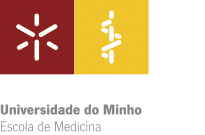The study of neuronal ensembles in freely-behaving animals is a critical question in modern neuroscience research. The inspection of neuronal firing (through calcium fluctuations) or neurotransmitter/neuromodulator release and signaling enables us to better understand intricate neural circuits and demystify complex behaviors.
Recent advances in genetically encoded fluorescent sensors facilitate the monitoring of cellular events from genetically defined groups of neurons in vivo. These sensors, coupled with state-of-the-art technologies such as multi-photon microscopy, miniaturized one-photon microscopes and fiber photometry, allow us to examine neural circuit activity in freely behaving animals, with unprecedent temporal and spatial resolution.
The objective of this advanced course is to expand exposure to available state-of-theart imaging tools for application in modern neuroscience. The course is formatted to include introductory lectures for laboratory practical sessions, the latter being the main focus.
In this intensive and comprehensive laboratory-oriented course we will focus on the following topics to assess neural circuit activity in freely-behaving animals:
- Fiber photometry, to detect calcium signals;
- Fiber photometry, to detect neuromodulator/neurotransmitter release/signals;
- Confocal imaging of calcium signals in the nematode C. elegans;
- One-photon imaging of calcium signals, using miniscopes, in freely-behaving mice;
- Multi-photon calcium imaging in C. elegans and head-fixed mice;
- Optogenetics, coupled to calcium imaging/fiber photometry, to simultaneously manipulate and record neural circuit activity in freely-behaving mice.
Participants should be able to apply the knowledge acquired during this course to their own research. For each module, participants will learn about concepts and tools of the latest developments in the fields of study. By the end, participants are expected to be able to appropriately design an experiment of imaging and manipulation of neuronal circuits in vivo.
This course does not provide credentials for the exercise of medicine for those without appropriate training, recognition and registered at the "Ordem dos Médicos" or international equivalent institutions.

